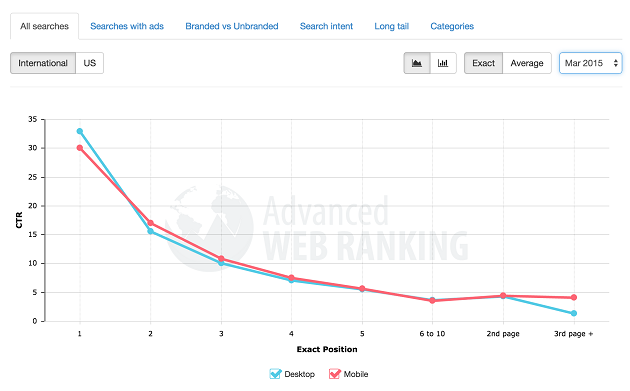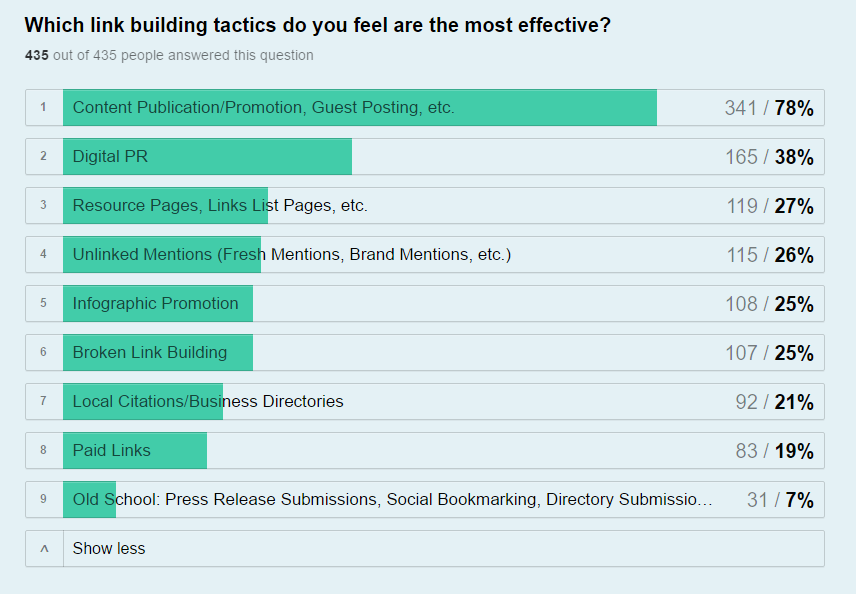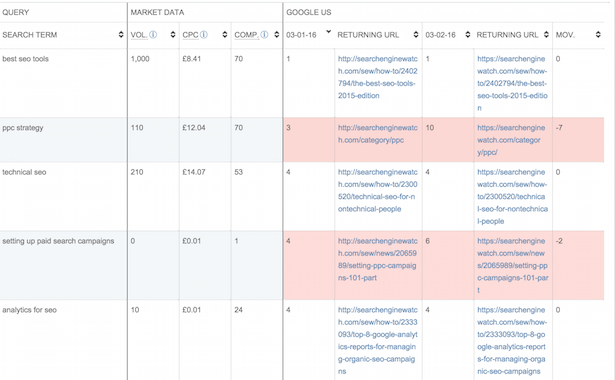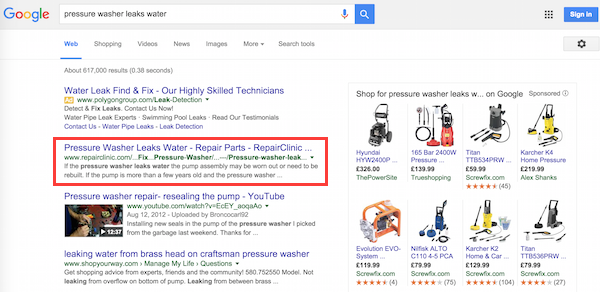The way that search marketing has evolved over the last few years has brought content marketing and SEO ever closer together.
Content creation and SEO used to be very separate disciplines in the past, but now it’s hard to see how either can be practiced effectively without at least some knowledge of the other.
Which brings me to the question: what do content marketers need to know about SEO (and vice versa) to achieve the best results?
In this post I’ll make an attempt to answer that question, with the help of Kevin Gibbons, MD at Blueglass and Sticky Content’s Content Director Dan Brotzel.
What do content marketers need to know about SEO?
Here are some of the tactics and skills, mainly associated with SEO, that content marketers need to be aware of.
I’ve not mentioned technical SEO here, though it is of course important as the foundations on which effective SEO (and content marketing) is built.
Keyword research
Keyword research enables SEOs to find gaps and opportunities to help target pages rank, by understanding the popularity of keywords.
For example, a site producing content around wedding dresses needs to understand the most popular terms used, and the range of terms they need to optimise their content around.
There are lots of useful SEO tools (many are free) which can help with keyword research. Google’s Keyword Planner and Trends are obvious ones (though Keyword Planner has just become less useful), while just typing terms into Google and seeing the suggested searches is another way.
One tool I’ve found useful recently is Answer the Public, which provides some great insight into the kinds of questions people have around a particular topic.
Here are the results for ‘content marketing’. It provides some great insight into the kinds of questions people are asking around a topic, which should help content marketers to target more effectively, as well as generating some useful ideas.
“Keywords and other SEO insights are a vital tool. They provide a useful (and often surprising) index of users’ preoccupations, and the words that they actually use to phrase their searches. Anyone in the business of generating ideas for content should see keyword research/data as a rich resource for understanding user intent and interest, and make it integral to their brainstorming process.”
Knowledge of user search behaviour
This is related to keyword research, as this provides insight into how people search, the language used etc. It’s more than that though…
Insights such as the seasonality of some searches can inform content planning, as can the way people view and interact with search results.
Effective content marketing looks at the target audience’s questions and concerns and produces content to address their needs. Knowledge of how people search and what the search for provides plenty of insight to help with this goal.
Attracting authority links
Link building is a valuable tactic for SEOs and one which content marketers should be aware of.
They don’t necessarily have to actively build links, but can attract links by creating content that people want to link to and promoting in to relevant publications and channels.
Indeed, a 2016 link building study found that content based link building was by far the most effective method.
Proving the value of content
There are plenty of content marketing metrics to look at, and the SEO value of content should be part of the measurement applied to content efforts.
As Kevin Gibbons says, it can help to secure budget:
“Knowing the role SEO can play helps to prove the value of content. If you can forecast and report that your content will generate a monetary value in terms of organic traffic and revenue, this is when people can start to scale their investment towards building valuable content assets.”
There are several SEO-related metrics to look at – the organic traffic (and any related revenue) delivered by the content you produce, the links it attracts, and the success in securing organic search positions.
What do SEOs need do know about content marketing?
These are the tactics and skills normally associated with content production which are becoming ever more valuable to SEOs.
Many of these tactics are interchangeable. For example a focus on the target audience is essential for SEO and content marketing.
The importance of storytelling
Content creation requires a degree of creativity, which can also be valuable from an SEO perspective.
As Kevin Gibbons explains:
“The biggest thing SEO can learn from content marketing, in my opinion is around the importance of storytelling.
It’s vital that you get your message across, providing the best experience in the format that resonates with your target audience. SEOs can often be guilty of sticking to the tried and trusted campaigns that have worked in the past, great content marketers realise that it’s not about what we think, it’s about your audience.
Do your persona analysis, speak to your customers, find out what they really want to see and have a less is more approach towards driving and engagement through doing the best job possible to tell your story.”
A focus on the audience/customer
An effective content strategy needs to address the needs of your target customer, and should also align with business goals. It’s not just about attracting traffic, rather it should aim to attract the right kind of customer.
If you address the needs of your target customer through content, the viewers of this content are likely to be your target audience.
For example, retailers can use content such as how-to guides to attract potential customers. So, Repair Clinic produces useful guides on appliance repair. This is useful content which also ties in closely with, and therefore helps to promote, its products.
It’s great for SEO too, as it helps them to target searchers with appliance-related problems, its target audience.
There are SEO tools and techniques which can help to answer these questions, but a broader understanding of the target customer can be gained by using a wide range of information.
This includes customer surveys and reviews, information from customer service interactions, and much more.
As Dan Brotzel says, this process requires creativity:
“Content marketers need to apply editorial initiative and imagination to generating ideas for content that can both address users’ needs and business requirements. They need to find ways to answer the question: What kind of content do our users care about? What counts as a good idea for them? What kind of ideas and content can we credibly produce from within our niche? How can we use content to support our goals?”
Importance of quality content
The old SEO techniques of churning out content for the sake of putting target keywords on a page is no longer effective.
Algorithm updates have forced SEOs to think more about the quality of the content they produce, and this is also the focus of effective content marketing.
As Dan Brotzel says, quality is what users want:
“The great thing about the evolution of SEO is that it is pushing content ever closer to the one criterion that users are ever likely to care about: quality. Yes, you want your content to surface high in results (and to be accessible and scannable, come to that), but there’s no point being easy to find and consume if what you’re offering users isn’t on reflection actually worth finding.”
Quality is, of course, a very subjective term, and is ultimately something for the end user to judge, but the aim should be to produce content that is valuable.
This can be measured to a certain extent in the way that users interact with it (on-page behaviour, actions taken after reading etc) but also in the way that search engines rank content.
Quality can also be a factor in search rankings. For example, if the content is answering the question that the searcher typed into Google, this helps it rank higher.
This is the ‘long click’ (as explained here by Bill Slawski). It’s similar to – but not the same as – bounce rates.
It’s essentially a measure of how long a user spends on a page before returning to the search results page. If they take time, or don’t return to search results, it tells Google that the content has satisfied the searcher, and is therefore relevant to the search query.
Over time, quality content which achieves this will rank well. It will also attract links and social shares, all of which help in terms of SEO.
This is why a focus on evergreen content can be a great tactic for content marketers and SEOs alike.
For example, a post on SEO basics (since updated) from 2014 has delivered traffic over a long period of time. There’s an initial spike after publication, but the traffic didn’t drop off totally, it continued to deliver visitors to this site. In fact it attracted more than 25,000 pageviews last month, more than two years after publication.
The reason is that this is useful content for searchers, and this has helped the article top Google for the term ‘SEO basics’ for some time. This ranking then helps to deliver more visits, attract links, and so on. It’s a virtuous circle.
In summary
The reality is that no marketing discipline can exist in a vacuum. They all rely on skills and techniques normally associated with other disciplines.
Email marketers need some content skills to make their subject lines and email copy more effective, ecommerce sites rely on SEO techniques to attract customers, and so on.
For content marketing and SEO, its very important for practitioners to understand the importance of the tactics and skills of each.
In a nutshell, SEO requires good content to be really effective, while content producers need to use SEO to help with content planning, and to ensure that the content they work hard on can be found by their target audience.









No comments:
Post a Comment